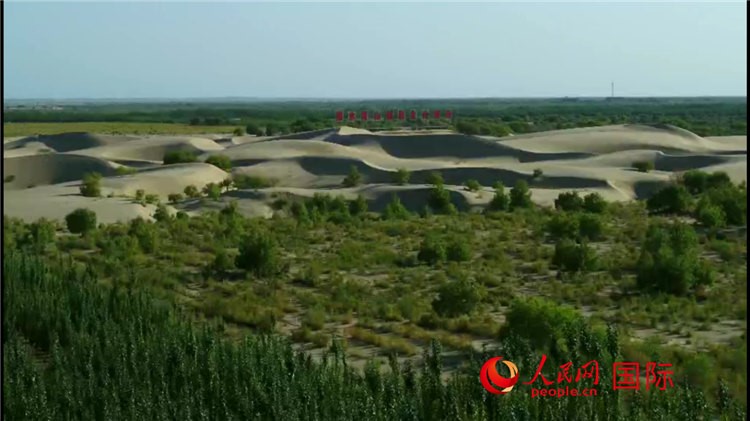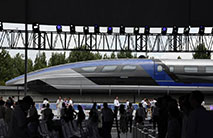Xinjiang’s impressive development achievements
Before setting foot in Xinjiang, I was not very clear about the level of development there. I just knew that western China lagged behind the country’s eastern and southern regions in terms of development and modernization in the early years of reform and opening up.
But I found that Xinjiang’s development achievements and living standards were much better than I had previously expected after my recent trips to about 10 places in the region, which is also striving to accelerate development. I was very impressed by what Xinjiang has achieved.
Solid infrastructure
Nowadays, no matter which city you visit in China, you will find good infrastructure. But in my opinion, it has never been easy for Xinjiang to build a solid infrastructure. The region’s rough terrain, mountains extending for thousands of kilometers, the vast Taklamakan Desert, and scattered population reduce the economic feasibility of launching major infrastructure projects. In order to rise to these challenges, China needed to invest more in improving the region’s economic mobility.

Photo shows a modern highway to a remote village at the northern foot of the Tianshan Mountains in northwest China’s Xinjiang Uygur Autonomous Region. (People’s Daily Online/Walid Abdallah)
We visited Fangjiazhuang village at the northern foot of the Tianshan Mountains, about a two-hour drive from the city of Urumqi. We didn’t see any other villages as our car sped along a modern highway. It seemed that the road had been specially built for the remote village. More convenient transportation lured visitors from Urumqi to the village, and villagers, who used to make a living by farming or herding, were now able to run agritainment businesses or restaurants. In this way, the road has boosted the village’s economic growth.
On our flight from Urumqi to Kashgar, we saw the white snowcapped Tianshan Mountains stretching for hundreds of kilometers. To my astonishment, roads linked small villages scattered in the mountains.
Another thing that astonished me were the desert highways connecting counties and cities near the desert. They are flanked by green belts to prevent the roads from being buried by drift sand.
Sand control in Makit county
Makit county in southwest Xinjiang has a population of 260,000. With over 90 percent of its area covered by desert, the county had been plagued by severe drought and an annual average of 150 days of sandstorms, which seriously hampered local development.

Photo shows a view of a sand-fixing forest in Makit county, northwest China’s Xinjiang Uygur Autonomous Region. (People’s Daily Online/Walid Abdallah)
To address these problems, the county launched an ambitious project to plant 1 million mu (66.67 hectares) of sand-fixing forests. Currently, a total of 410,000 mu of forests have been completed, and 220 million seedlings have been planted. In addition, a 350-kilometer-long belt of trees was grown by local residents on both sides of a highway that traverses the desert. The project enables villagers to grow vegetables in greenhouses, playing a vital role in improving local farming conditions.
Convenient e-commerce boosts sales of Xinjiang’s specialty items
Xinjiang is renowned for its high-quality agricultural products, and e-commerce has opened the door to the online marketing of these products, enabling consumers to receive their purchases more conveniently. During my visits to several enterprises for agricultural products, I noticed that they had all turned to modern marketing techniques, including e-commerce and livestreaming marketing. Thanks to better aviation and rail connectivity, consumers across China now receive the region’s specialties they bought online faster.

Livestreamers advertise local agricultural products during a livestreaming session in northwest China’s Xinjiang Uygur Autonomous Region. (Photo courtesy of “A Date With China” media tour)
Overall, Xinjiang’s development achievements left a good impression on me, and the modernization of the region’s urban and rural areas exceeded my expectations. “For both outsiders and residents who live in Xinjiang, the region is enjoying rapid growth,” a local told me.
I believe that Xinjiang will embrace more development opportunities.
The author is an editor with People's Daily Online's Arabic version.
Photos
Related Stories
- Technology and tradition: How Xinjiang reconciles both
- China holds national meeting on pairing-assistance to Xinjiang
- Story of a Uygur tour guide in the ancient city of Kashgar
- Xinjiang’s new frontier: Rural e-commerce shining bright in China's sunny northwest
- Xinjiang, My home: Ethnic Kazakh father records happy life through paintings
Copyright © 2021 People's Daily Online. All Rights Reserved.










